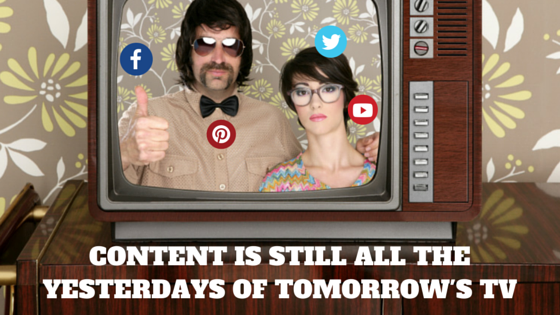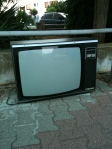We have yet another set of statistics that declare the living room TV Viewing habits are changing. Let us look at this from another perspective: I would put it to you that it is not TV Viewing that has changed it is human habits that arhave changed due to the advent of ‘New Technologies’. If you were to take away the smart-phones and tablets from a TV centric family (as I have done at home recently) you will see that the TV viewing on the BIG Screen once again takes principle place. Not book-reading, or board-game-playing but TV, and it quickly becomes a fight for the remote control with unhappy, sulky members of the family who are not interested in what the others are viewing….however we noticed that slowly but surely a migration back to sitting as a group with sharing-as-a-group takes place and an agreement to share what is on the TV, as it did in the time before these other access devices entrered the fray. As a family we searched for common-content that all the family could get a little something from, be it a documentary, a film or even a cartoon that pleased everyone . We became part of our children’s TV world and they ours, once again. We also adhered to the ratings and respected the different viewing options based on quality of content – NO MORE VIOLENT, SEX RIDDLED, TRASHY OR STOOPID content. It was a pleasant and fulfilling exercise. During the ads we went to the loo, talked and did what we always used to do during the Ad breaks – Watched some Ads and not others… (BTW Ads do not require ‘viewing only’ for them to have effect – the audio part subcontiously enters the brain even if you are not watching!).
Allowing the phones back instantly became the new distraction thus proving that easy access to communication (messaging), access to fun & stupid videos (via the internet) and access to ‘work and private’ emails urghhh, highlighted a penchant for instant gratification and removed the need to ‘work to find common-TV Centric ground’ and once again enabled what we call ‘gap-filling’ . Each to their own simplistic and shallow needs. The IAB piece on chaging TV Viewing Habits IAB Article states the following:
extract: For example, the incidence of checking emails is consistent during TV programmes and ad breaks (both 34 per cent) whilst texting or Instant Messaging is only 1 per cent higher during the ad break than the programme. The device tracking showed, overall, there was actually more online activity per minute during a programme than an ad break.
The information in the article is not startling and supports the findings of the experiment we carried out at home . It shows that if the viewer is not fully engaged with the programme they will still feel the need to do something else. We saw distraction in the form of speaking and fidgeting or leaving the couch when the TV show did not fully delight a particular family member. So what does that tell us? It only tells us that TV is all about engaging the viewer as much as possible. It has never been that we all sat avidly from start to finish without some form of mental distraction, UNLESS it was a TOTALLY compelling content from beginning to end.
In the old days we had a lot less content to choose from and it was a lot less ‘same-same’, as it is now in the world of 24 Hour channel stuffing. It is not TV Viewing that has changed it is the enablement of filling the ‘distraction time’ without having to get up and do something else and it is the masses of same-same stuff on TV that drives people to look for fresh and exciting, different content elsewhere, which makes the stats skewed. The people surveyed must have been sat in front of the BIG Screen for those statistics to have been gathered…The only difference is from yesteryear to today we have technology that has made it simple to ‘visit another place’ for instant gratification. The dwindling ‘attention span’ is bad content and boredom, no matter how minor, leads to ‘gap filling’.
And to finish: The Kettle Surge moment, written in the article, is also a just sign of the developing times – We have much more efficient coffe machines and probably hear the sound of corks popping much more, as NESPRESSO and WINE has replaced the TEA drinking of yesteryear. LOL.






